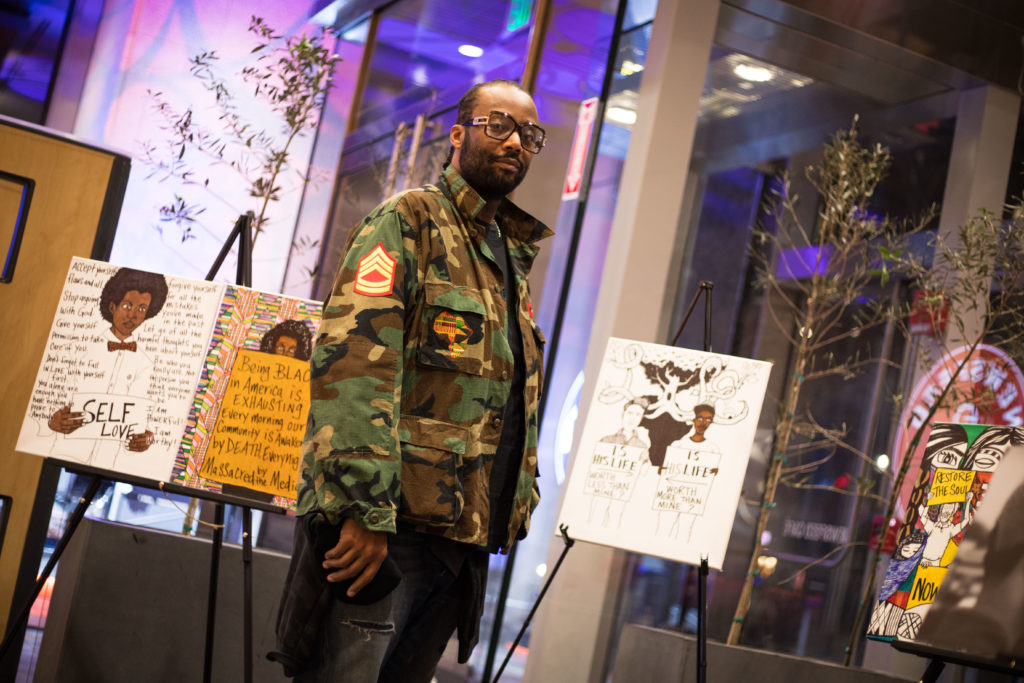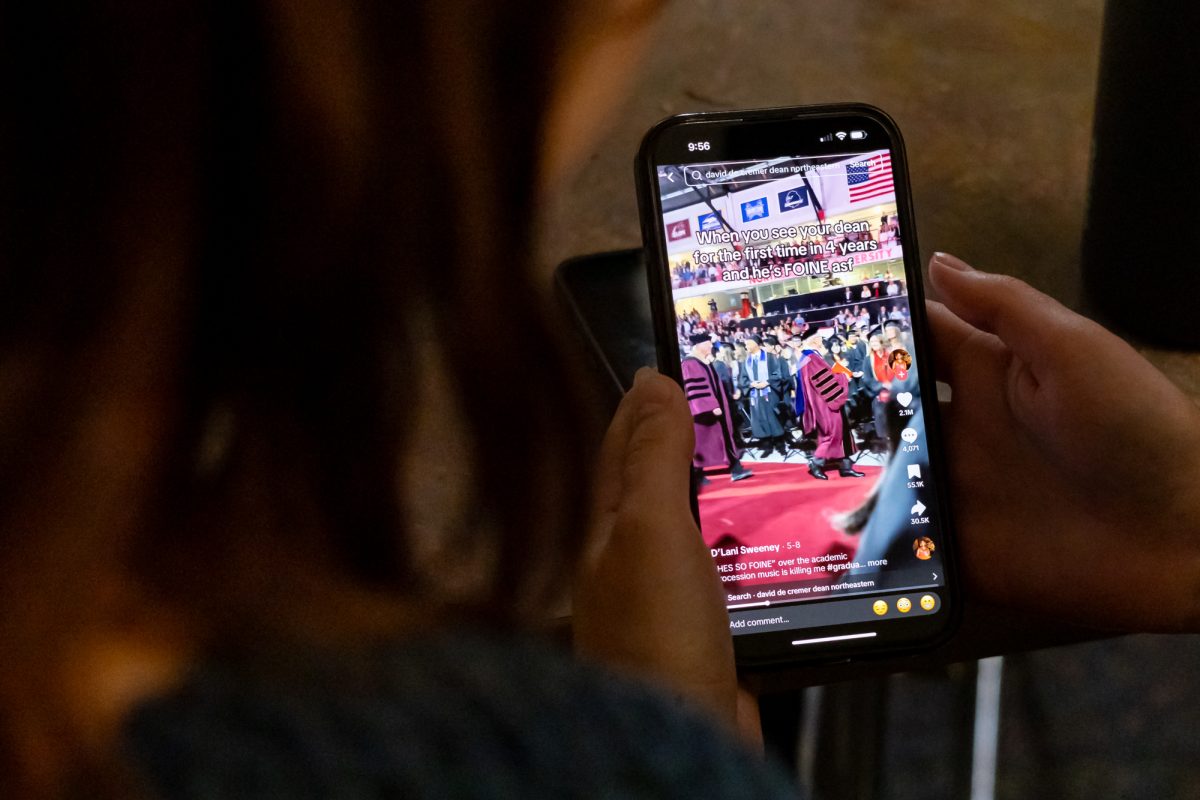By Mridhu Khanna, news correspondent
Black male artists from around Boston displayed their work at the Newsfeed Cafe in the Boston Public Library Feb. 1 as part of an exhibition that showcased art and photography of individuals who are often left out of conversations about race in America.
“A lot of times people like to talk about our communities, specifically us, but we’re not involved in that dialogue,” artist Stanley Dominique said. “So, this is our way of trying to have that dialogue on our own terms.”
The event, titled “Works of the Black Male Artist Collective,” was co-organized by the Newsfeed Cafe and a Boston-area artist, photographer and poet, Matt Parker. He brought together black male artists from around Boston to form the collective, which he says functions as a community as well as an organization. He said the group’s goal is to foster an often difficult conversation about race.
“There are not many spaces where we can be seen and heard in positive lights,” Parker said. “This is an opportunity to create dialogue in spaces that aren’t familiar to us.”
Akiko Yamagata, who organizes events for the Newsfeed Cafe, said events like these allow for conversations between people who otherwise may not have opportunities to meet.
“One of our goals in launching this cafe is to create a space for community,” Yamagata said. “For conversations between members of the community that might not find an opportunity to connect otherwise.”
With the cafe’s glass walls allowing for a full view of Boylston Street, visitors strolled around the exhibit to view the works of TruSoul, Trevis Brooks, Dominique and Parker. Each artist showcased just a few pieces, but the works ranged from permanent marker on canvas to black and white photography to acrylic paintings.
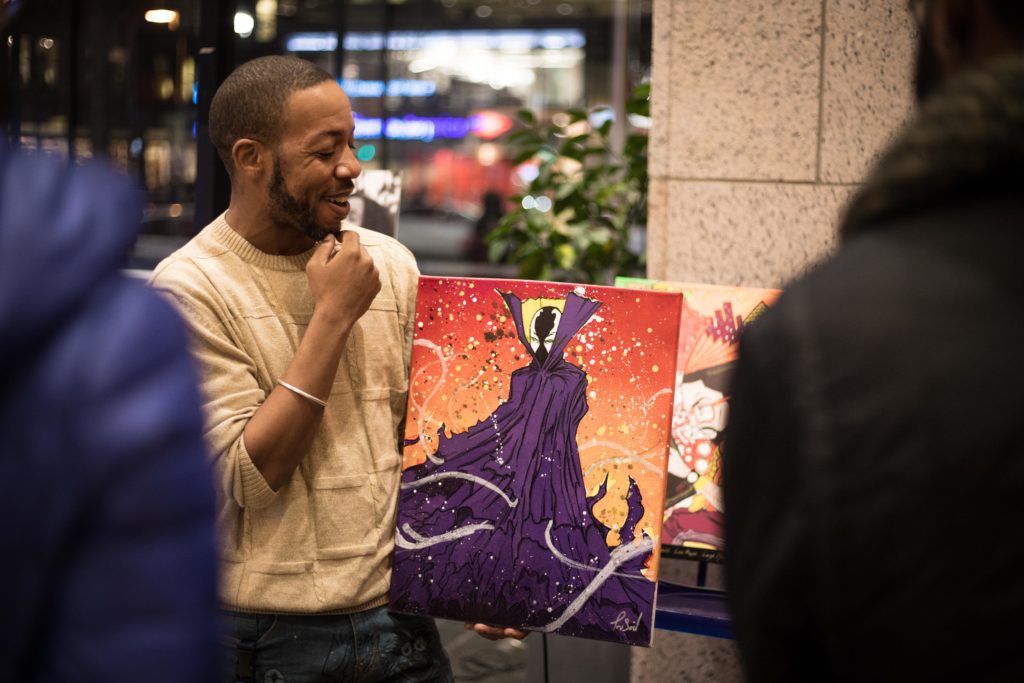
TruSoul explained to a small crowd of about six how he used tape and shadows to achieve texture and depth on one of his pieces. Dominique spoke to a young woman about how he adjusted the hues on his photograph to make the image appear in varying shades of blue.
Dominique, also known as Mozes, stood in front of his three photographs of Boston’s Chinatown and Dorchester neighborhoods and New York City. Dominique, who has a degree in graphic design from the University of Massachusetts, Dartmouth, said he aims to showcase marginalized communities through his photography.
“My pieces today [are] about sharing stories about communities that don’t get the light that they deserve,” Dominique said. “This is me sharing their stories and encouraging others who may want to get involved to just jump into it.”
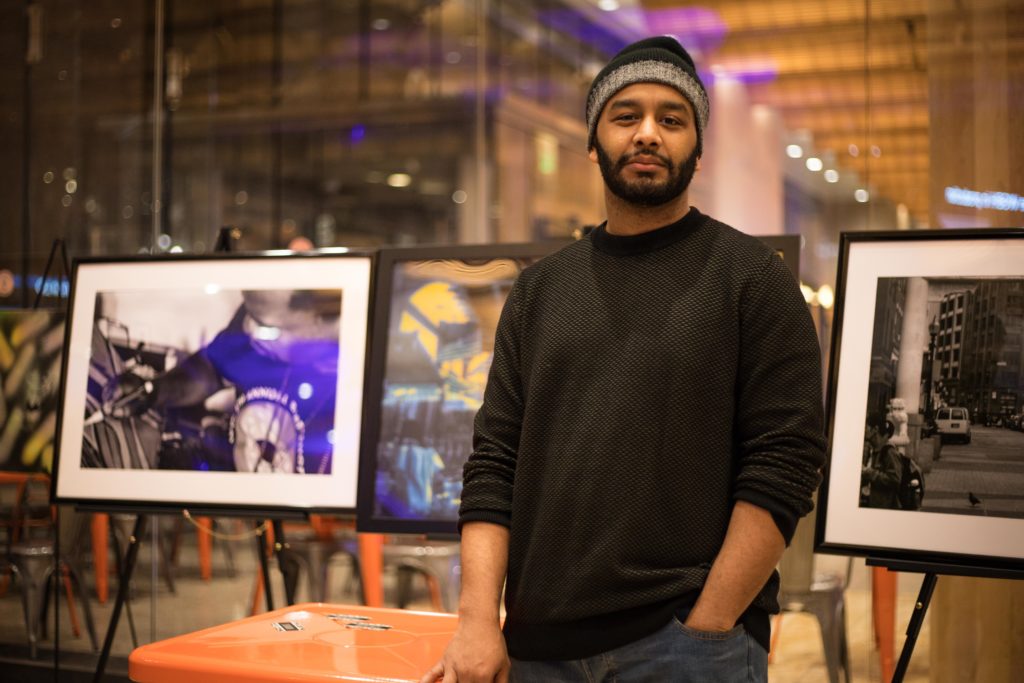
Dominique spoke about how he and other artists use art and photography to encourage conversations about the way they and their communities are portrayed. He is currently working toward a master’s degree from Emerson College in civic media, which focuses on civic engagement through mediums like social media and art.
“I like going to spaces where there’s not a lot of us,” Dominique said, referring to black men. “Going into these spaces and sharing what I’ve been doing. We try to be very accessible so they see us, they see who we are.”
Sporting a jacket with “Jesus is a Black Man” written in big black letters across the back, Brooks stood by his canvases willing to have a conversation with whoever felt something because of his work. Known as TrevCity, Brooks displayed pieces that he said reflected his “feelings with Americans’ current racial violence.”
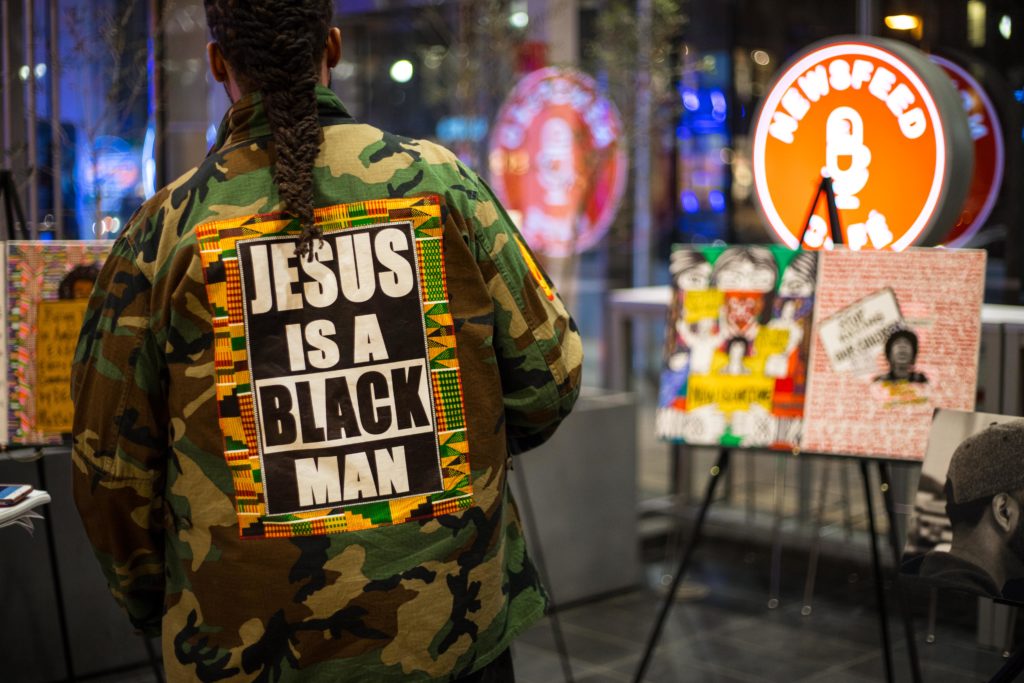
“I love the fact that my art makes people feel something,” Brooks said. “Good, bad, whatever it makes you feel — if it makes you feel something, I did my job.”
While some of the other artwork allowed viewers to interpret what messages the artist wanted to convey, Brooks’ pieces were proactive and direct in their messaging. They addressed issues like race violence, self-love and equality.
One of Brooks’ pieces features a black woman, whose face is hidden behind a large white sign, standing in front of a colorful background. Most of the canvas is covered by the sign the woman holds, bringing attention to the words written in black: “Being Black in America is Exhausting. Every Morning our Community is Awakened by Death. Every night Massacred by the Media.”
On a work titled “It’s Madness,” the names of black men who were killed and became civil rights and Black Lives Matter icons, like Emmett Till, Trayvon Martin, Eric Garner and others, are written in red. The names act as a backdrop to an image of a black woman holding up a sign that reads “Stop Killing Our Children” in black lettering.
“This is my truth. This is how I feel. This is how a lot of my family members feel,” Brooks said. “But a lot of times, we don’t have conversations about the uncomfortable. I’m very comfortable with being uncomfortable.”


